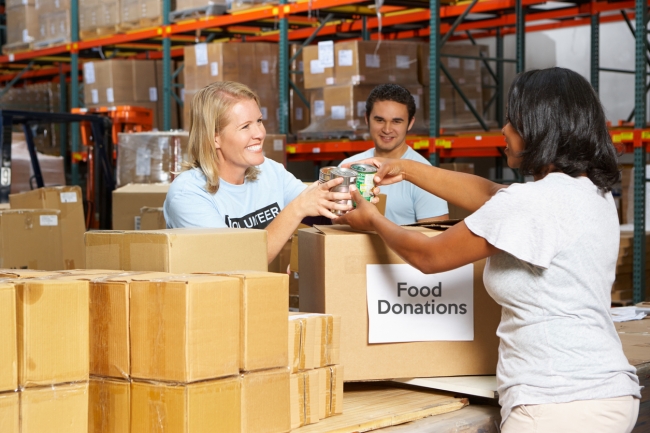4 minute read
Sustaining the surplus within the supply chain & putting an end to food waste
Official statistics from the environment, food and rural affairs committee, report that the UK throws away a staggering 8.1 million tons of food every year. With figures this high, and ever-new innovations being introduced each year within the logistics industry, fuelling the improvement and efficiency of our supply chains, SCCG looks at whether there is there an innovative solution to prevent so much waste occurring; or to even put a stop to this waste for good?
Food businesses can engage in redistribution, by either redistributing their excess food at store-level or implementing a redistribution plan across the supply chain. Starting with a contributing source to the problem, some retailers themselves, are making a conscious effort to prevent such waste.
One charity which actively advocates reducing food waste – specifically within the retail and manufacturing sector – is The Waste and Resources Action Programme – WRAP – who hold extensive knowledge of food waste prevention, on a commercial scale.
They are regarded as the go-to organisation for food waste prevention throughout the UK; facilitating the implementation of focused waste prevention strategies; by working closely with manufacturers, retailers, and suppliers – to help them cut waste and achieve financial and environmental savings, within their supply chains.

With new innovations being introduced within the logistics industry, fuelling the improvement of supply chains, is there an innovative solution to prevent so much waste occurring? / Picture: Getty/iStock
WRAP propose 5 significant steps to be adopted and implemented by retailers, suppliers, and manufacturers alike: accurately recording waste, accurately costing waste, setting achievable waste reduction goals, identifying and targeting food groups which pose a greater risk of becoming waste, initiating and encouraging an ethos for waste prevention processes to be adopted, and correctly implemented.
It is this shift in focus, which has sparked a collaborative revolution, involving not only retailers; but also manufacturers, suppliers, and charities, in a joint effort to turn WRAP’s practical guidance into realistic and successful approaches for significantly improving resource efficiency, preventing waste.
As such, changes are being made: British multinational groceries and general merchandise retailer Tesco last year publicised their pledge to start publishing the food waste figures of 24 of its major suppliers.
Spring 2016 witnessed the launch of Tesco’s new Perfectly Imperfect range of ‘wonky’ fruit & vegetables; and subsequently, in 2017, Tesco announced their preparations to become the only UK retailer to put an end to wasting food, suitable for human consumption.
Tesco proceeded to promise none of its UK stores would wantonly waste perishable produce, by March 2018; revealing their clear strategy, to sell surplus groceries via “reduced to clear” stickers, whilst re-distributing any further unsold food, which would otherwise be disposed of, to local charities.
Tesco is one affirming example of retailers – simultaneously, and seemingly synchronously – upping their game, and beginning to accept their power and responsibility. This stance is adopted, not only for the sake of feeding those in need, but also because of the damaging impact that food waste also imposes on not only the environment, but also the economy.
Another prime example of the attempts made to unite the industry for both retailers and manufacturers alike, to help reduce the huge amount of food waste, was highlighted within The Grocer’s 2016 ‘waste not want not campaign’.

A Wrap report revealed that an estimated 205,000 tonnes of food waste remains to be successfully redistributed per year / Picture: Getty/iStock
Similarly, to wrap’s 5 advised steps to reduce waste, The Grocer adopted the principal of measuring waste, aiming to record and ultimately re-evaluate an accurate report of just how much food – which would otherwise have gone to waste – was successfully redistributed.
Although not yet universally perfunctory – the food waste hierarchy – a framework for the management of food surplus and food waste – aims for the prevention of waste and surpluses from occurring in the first place.
According to the Food and Drink Federation (FDF) – tackling food waste wherever it occurs across supply chains is a key priority. Distinguishing the distinction between food surplus and waste is crucial in the food waste hierarchy. Where surpluses cannot be avoided, they stipulate that wherever possible, food redistribution to feed people, is to be maintained as the highest priority.
Despite these clear defined steps, the charity, Wrap, reports that there is still much more work to be done; revealing that an estimated 205,000 tonnes of food waste (nearly 10 times the current figure) remains to be successfully redistributed per year.
Unavoidably, despite this noticeable and substantial increase in the amount of previously wasted food, now being successfully redistributed to charities, it seems that, no matter how sophisticated the ordering systems are, it may remain near impossible to perfectly match the supply and demand for every single retailer, 365 days a year, within such a changeable industry.
Whilst Food waste continues to have significant environmental, social, and economic global implications; it is important to continue to develop incentives for waste prevention, by reducing food surplus throughout the food supply chain.

